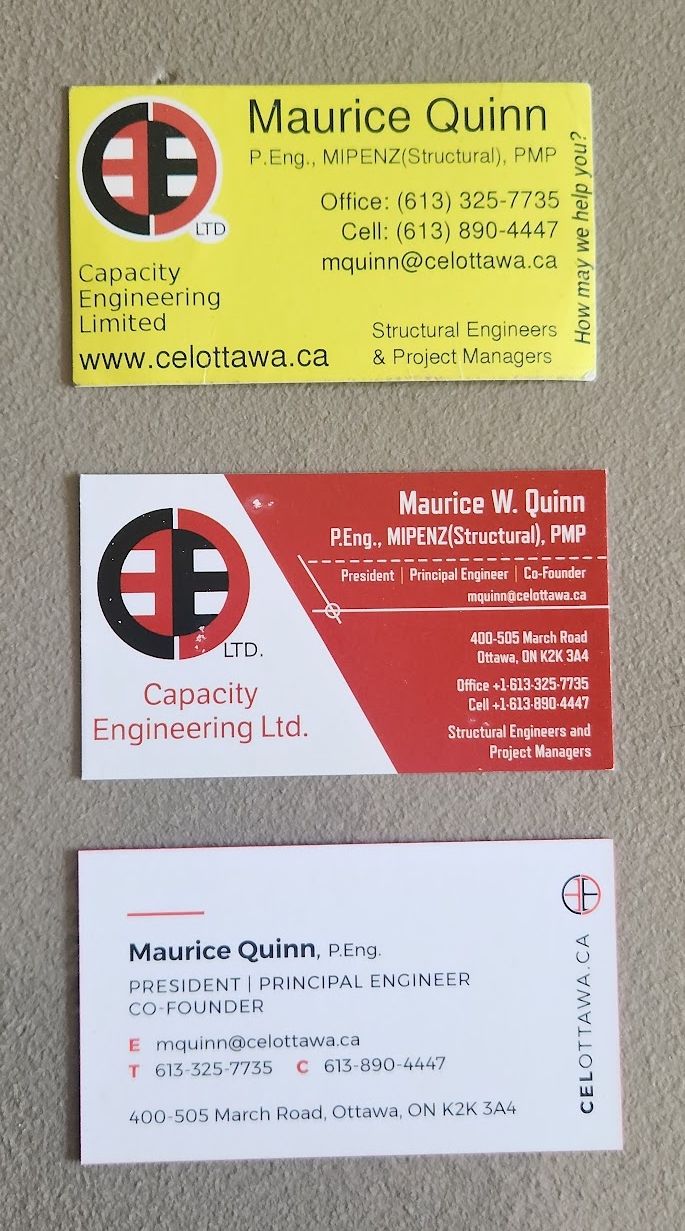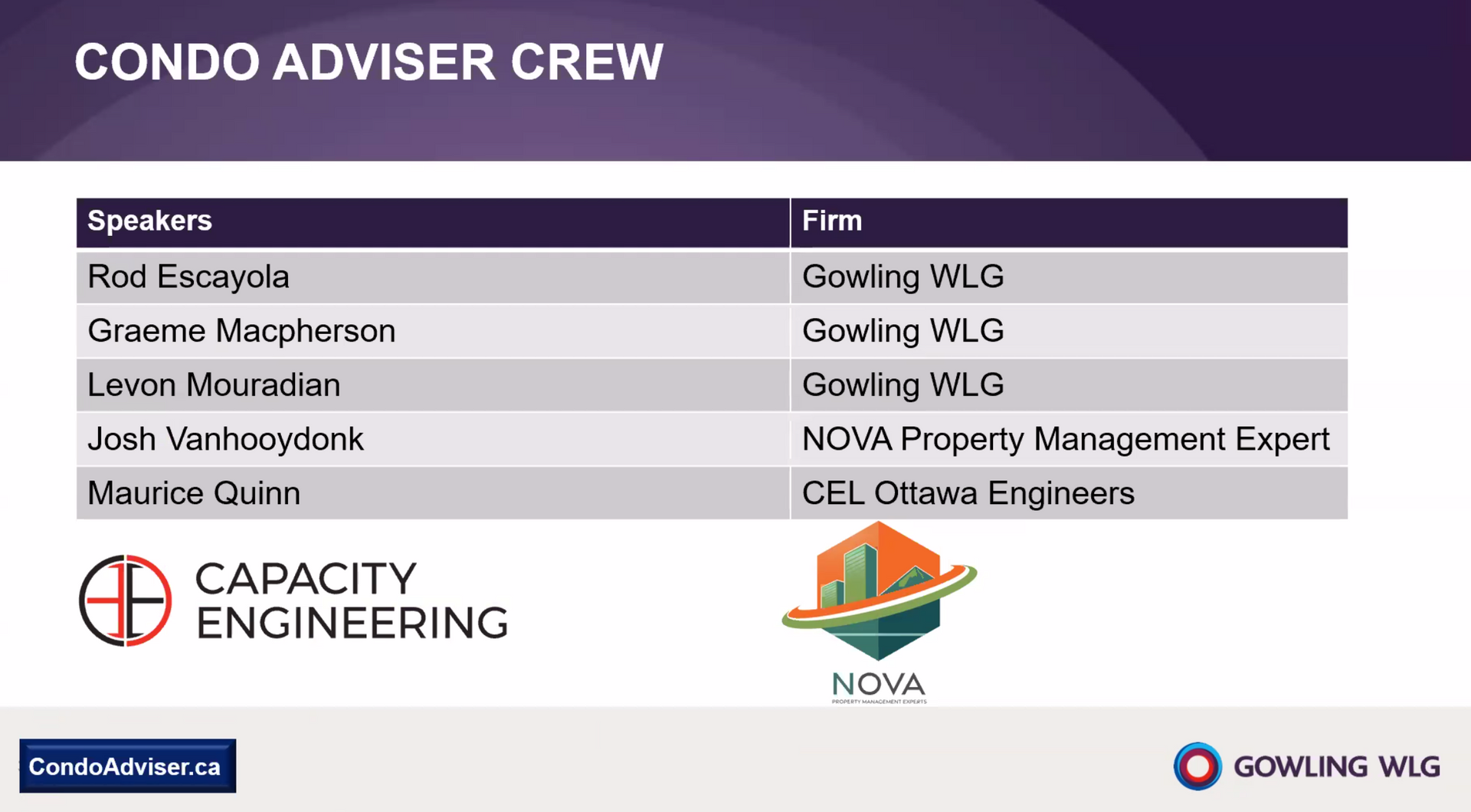Before you build your dream home; Read this!!!
Avoid the most common pitfalls...

We do residential engineering. This is a major component of our practice, albeit generally our focus is on problems, repair, restoration, maintenance, rehabilitation, and forensics. We do, however, offer new build and major renovation services as Structural, Civil, and Architectural Engineers. We further offer Geotechnical, Mechanical, and Electrical Engineering services as well as Architecture through our partners and colleagues in allied offices. So while the core of our work remains forensics, maintenance, and repair, we feel it is important to work on new structures [both in confirmatory and regulatory roles such as Field Review Consultants, as well as the Engineers of Record (EOR)] as there is no better way to keep on top of current practice and the latest changes to the applicable codes and standards.
A new home is the largest investment most people will ever make. A dream home is further linked to an enormous emotional centre, often core to the client's world and world view. This project matters. They are passionate, and heavily invested. Every decision matters. Every dollar is another cut into a finite budget that they have saved and worked for, often for much of an adult lifetime. These projects are works of passion, and are inescapably important.
We have recently been involved in just such a project. The home design is stunning, beautiful, and I fear may never get built. There is nothing wrong with the design. There is nothing wrong with the desire, will, passion, and care of the clients. There is everything wrong with the approach, and a complete lack of understanding of the process. You see, they have chosen to be their own GC. More on this in a moment...
“Before you build your dream home; Read this!!!” isn't some click-bait blog title. It is our firm imploring you to take a moment and reflect before you jump in. What do you do for a living? What is your skill set, that you bring to the day to day? How did you obtain this skill set, and was it easy? Did you learn it in a day, or a week, or a month? Perhaps some of the people reading this were born with an innate skill, some truly genius talent for a useful and saleable skill..... But I don't think it is a stretch to say this is certain to be a minority.
Whoever you are, and whatever you do, I do not pretend nor presume to have your skill set. I am not you, and I do not have the ability to do what you do for a living, unless you happen to be a Structural Engineer with a similar set of qualifications. Let's set all of that aside: I can't be you. Can you be me? Can you be your own Architect? What about your own Carpenter? Fabricator? Lumber Yard, Concrete Plant, Hardware Supplier, Fastener Specialist? Don't underestimate the value of the lifetime that each of these professionals, shop keepers, suppliers, and tradespeople bring to your project. While they will not always agree, and they need to be kept together like a herd of cats and a gaggle of geese, they bring something very real to your project. They will get along, roughly, internal to two groups, and fight between these (politely, but no less forcefully). You will have your design professionals, and your builders. The suppliers and shops are a sort of side-line cheering squad to all of us, and vaguely outside the "fight".
Don't be your own Architect, even when the law allows, and do not be your own General Contractor. There is a major caveat to these two pieces of advice: You may go right ahead and do so at your own cost, this cost consisting of time, money, and psychology. If you want to do so, understand that you will be bloodied and battered by the learning process, and your project will most likely go over time, over budget, and respect no scope. It isn't going to be your fault, but rather the natural consequence of a long and unending series of first time lessons.
My first residential design consisted of three beams, five or so lintels, strip footings, a couple of columns with their isolated pad footings, and the specification for trusses and floors. The office I worked for was kind, attentive, tolerant, and amazing. If you are near Kingston, Ontario, Roney Engineering is simply amazing and I strongly encourage you to consider their services wherever they can fit your needs. They walked me through every step, and a job that should leave the office in one or two days took me two and a half weeks. TWO AND A HALF WEEKS, for a young man who had graduated from a four year engineering degree, previously worked in both carpentry and steel fabrication, as well as being an avid small hardware projects enthousiast. My father had taught me to read engineering and architectural drawings years before. I had participated in many bridge competitions and varied other engineering competitions starting all the way back in grade school, culminating in my winning the local PEO Student Papers' Competition's "Most Commercially Viable Project" in my fourth year at university. In short, I was a good bet for someone who could do these simple, entry-level, engineering tasks... And it took me two weeks.
A similar story can be told for almost every person involved in your project, from the Architect to the tiler, the gib-stopper (drywaller/pasterer), plumber, electrician, roofer, and every other trade not least of which the GENERAL CONTRACTOR (GC). In many places, as a special bonus, anyone who takes on the role of a GC becomes responsible for site safety throughout the works. You may read that and think, "Well, I simply wonˋt do that...". Fine, sounds good, but guess what: Hiring more than ONE building trade is the definition of what the labour and safety people consider to be a General Contractor. Every job has a "Constructor", ie the building professional who is responsible for site safety. If you hired more than one trade, nearly always that's YOU. So: So what? What impact does this have? Well, this one small question among hundreds and thousands of such decisions and questions is that any accident on site in which a person is hurt and requires any medical attention is potentially going to be investigated by the ministry of labour. If anyone is seriously hurt, the ministry of labour WILL BE investigating.... And they are going to ask themselves: "Who is the Constructor" followed rather swiftly by "Were they qualified to run this site?" With rare exceptions, narrowly defined and suitably trained and qualified, the people reading this blog simply are not so qualified. The consequences and penalties can be very severe.
One more: When you hire people, can you approach multiple people for quotes, and then choose the best price, or what you consider to be the most advantageous offer? Sure, but you'd better know how. You need to invite everyone at one time, provide them all the same information, give them the same deadlines, and treat them equally in all respects. When you ask for a price, you’ve just formed "Contract A", and selecting the "winner" is the formation of "Contract B". All the other Contracts A only dissolve if you have done everything correctly, and if you haven't, you may be exposed to an action of claim for your violation of Contract A - Contract B. While rare, as there are some real costs, this is can be seen as a claim worth making on many projects with budgets the size of a custom home. You cannot disadvantage or favour anyone in your contracting; it is illegal to do so.... And you simply don't know how to avoid the traps.
What’s in a scope? The scope defines the work to be given to someone. I would strongly encourage you to stick to a very broad, wide, and simple scope. “Build me a home of XX size, built from YY materials, within a budget of ZZ. I want to see ## options in the preliminary stages, I want you to take me / bring to me / send to me colours, samples, and set deadlines for my decisions. Tolerate / do not tolerate my requests for changes. I would / would not like you to remind me gently / forcefully that my decisions have cost impacts. My top priority is schedule / cost / quality (pick only one), and I rank order the other two as S / C / Q (pick and order from the remaining two)." Then do not, ever, change your scope. Not ever. Make your decisions and stick to them, full stop. Measure and value what you want as priorities. There are no solutions, only compromises. If you want the design to be as inexpensive as possible, hire a Structural Engineer to lead the design, and hire a talented and seasoned Carpenter as your General Contractor. If your goal is the perfect function and form, gorgeous and polished dream home (with our without room for compromise), hire an Architect to lead your design team, and hire a professional Project Manager or Construction Manager to run the construction. The design team and the construction team will form one over-arching project team, but they simply won't agree. Don't listen to everyone, listen to the person to whom you have entrusted your scope and use them to talk to everyone else. The Carpenter (aka Framer) wants timber beams, and does not care about your ventilation systems or how they pass through the beams. If your design is fitted with half height steel beams by the engineer, these are going to be expensive, difficult to place, and the source of great consternation to the carpenters. They will also allow the HVAC systems to be installed with little to no trouble; they have a compromise position that favours, really enables, flat ceilings throughout. Did you tell your Architect that you wanted a minimum (or perhaps ABSOLUTELY NO) bulkheads along the ceilings? Well, that brief became those steel beams, and the source of your Carpenter's frustration. When the Carpenter complains, it should be to whoever you selected to run the design team, ie: the lead Consultant, and not to you. Questions that run up against an ill-defined scope will be sent to you for your judgment in due course. Don't involve yourself in tasks that are too granular. You're getting in your own way. What materials should be used in broad should be your choice. You should be asked if you want an ICF home, rammed earth, cold-formed steel, timber frame, mass timber, tilt-up, straw bale, or the traditional stick-framed home that makes up much of the built home stock in our practice areas. Stick to the high-level in your scope. Don’t choose your beams, your joists, or your concrete strength and class. Choose your stair style, location, and the tread materials and nosings, not your stairs’ construction materials or fastenings. Here's what it boils down to: If you want to build your dream home, hire TWO PEOPLE. Two, and ONLY TWO. Hire a consultant you trust, based on references and their portfolio of successful projects. Call the references; talk to them. Choose carefully, then trust.
After that, with their assistance and agreement, hire a general contractor you both trust, and can agree upon. Once these high-level tasks are complete, get out of your own way and make sure you are regularly informed of progress, project challenges, and the efforts to make all of the dream you have come true. Don't get involved in the granular, but stick to the high-level and enable your team, duly formed and empowered by you, to deliver your dream home to you.










